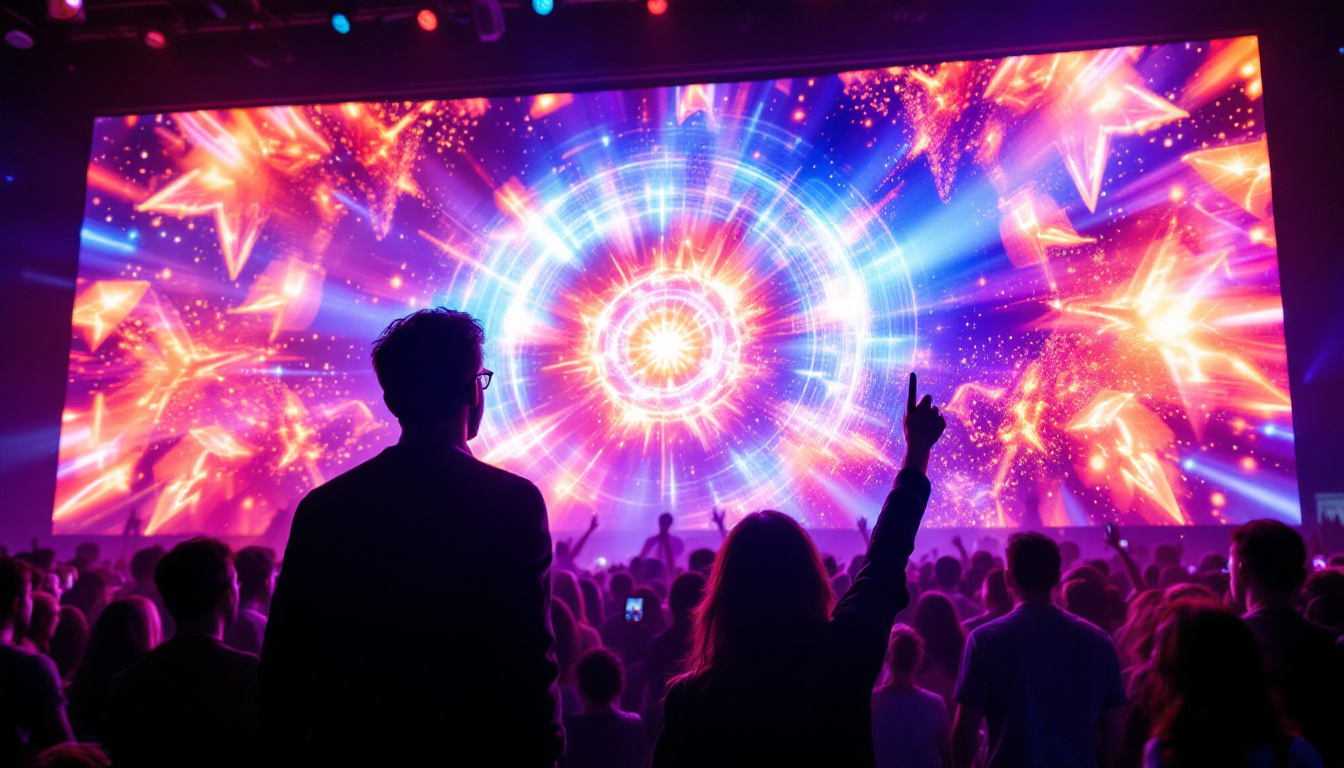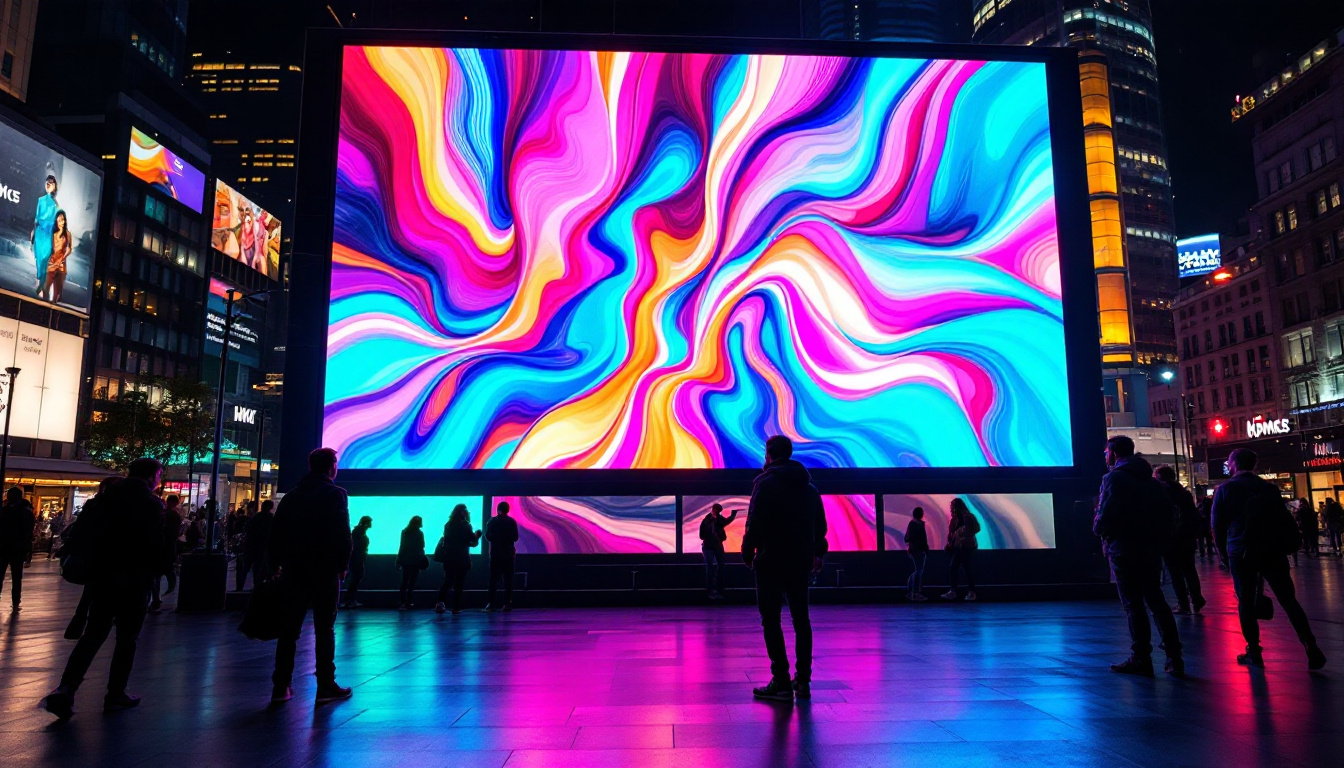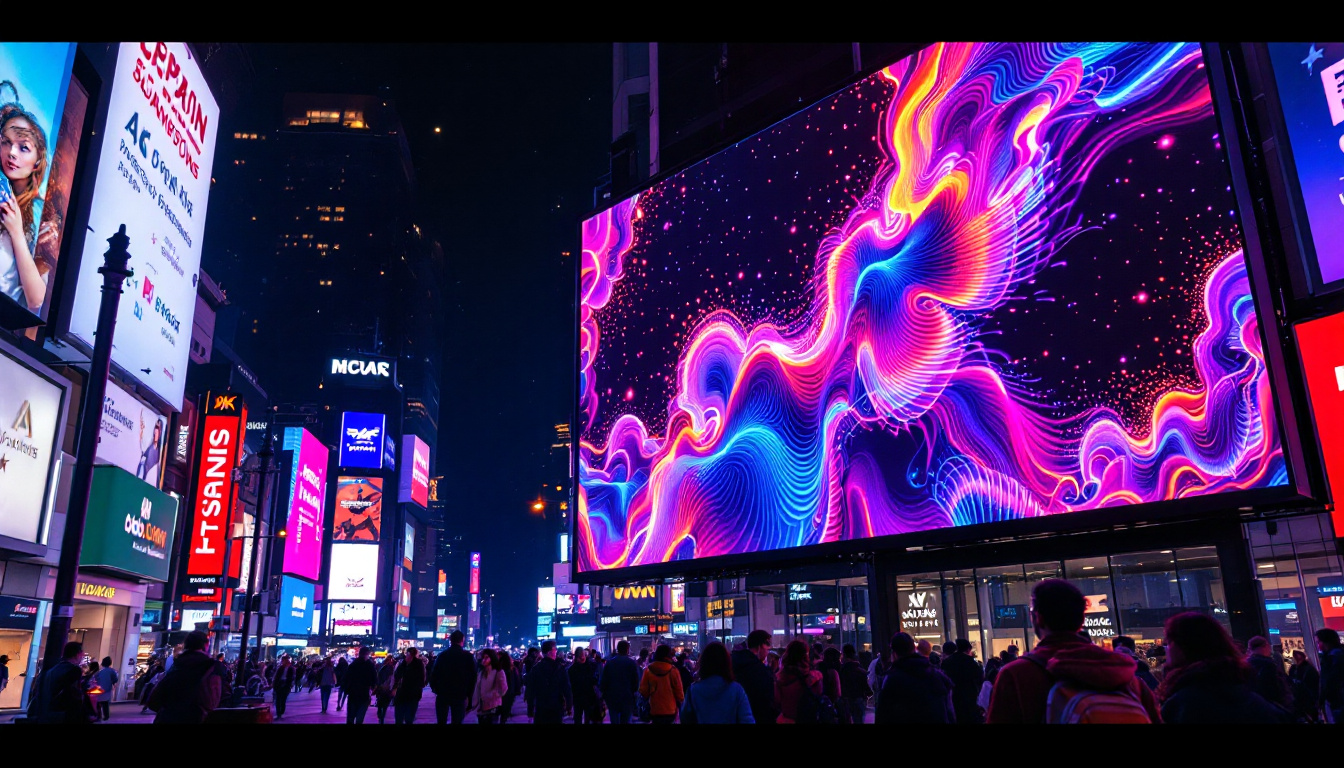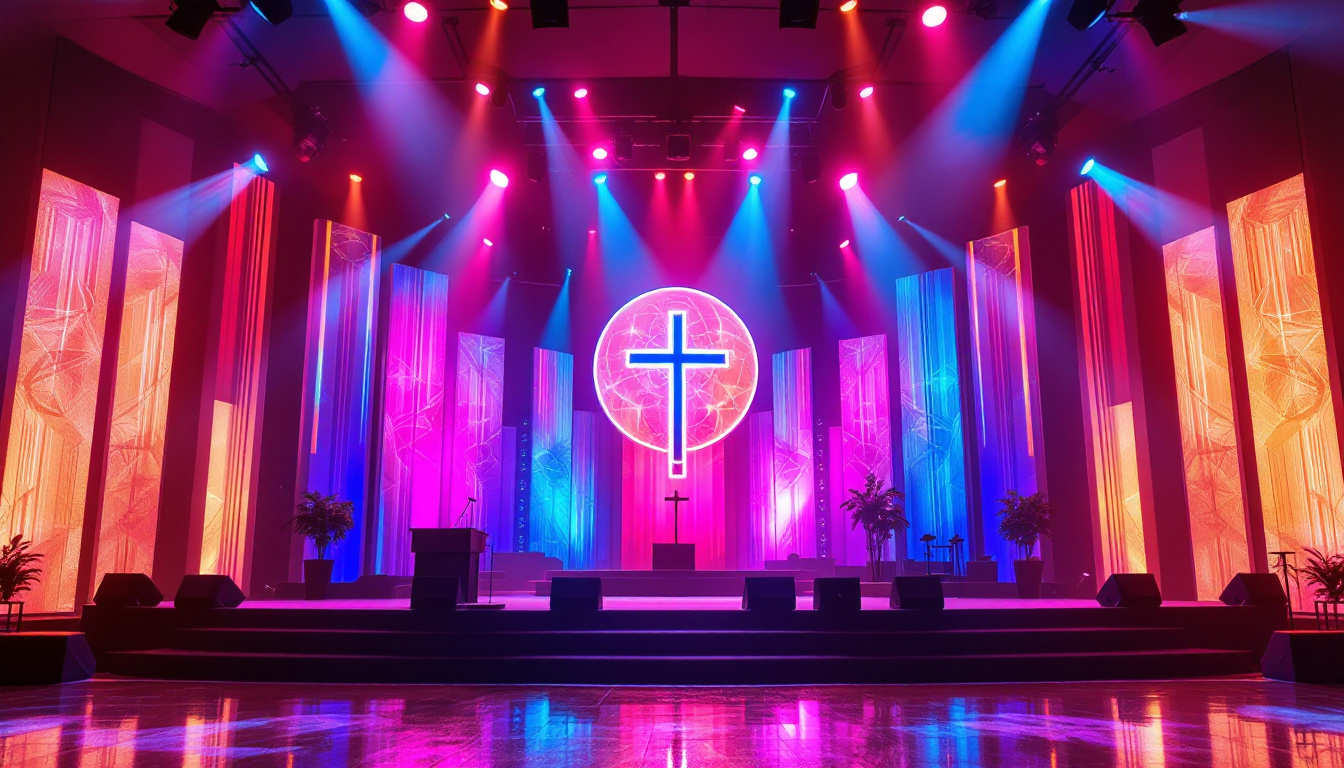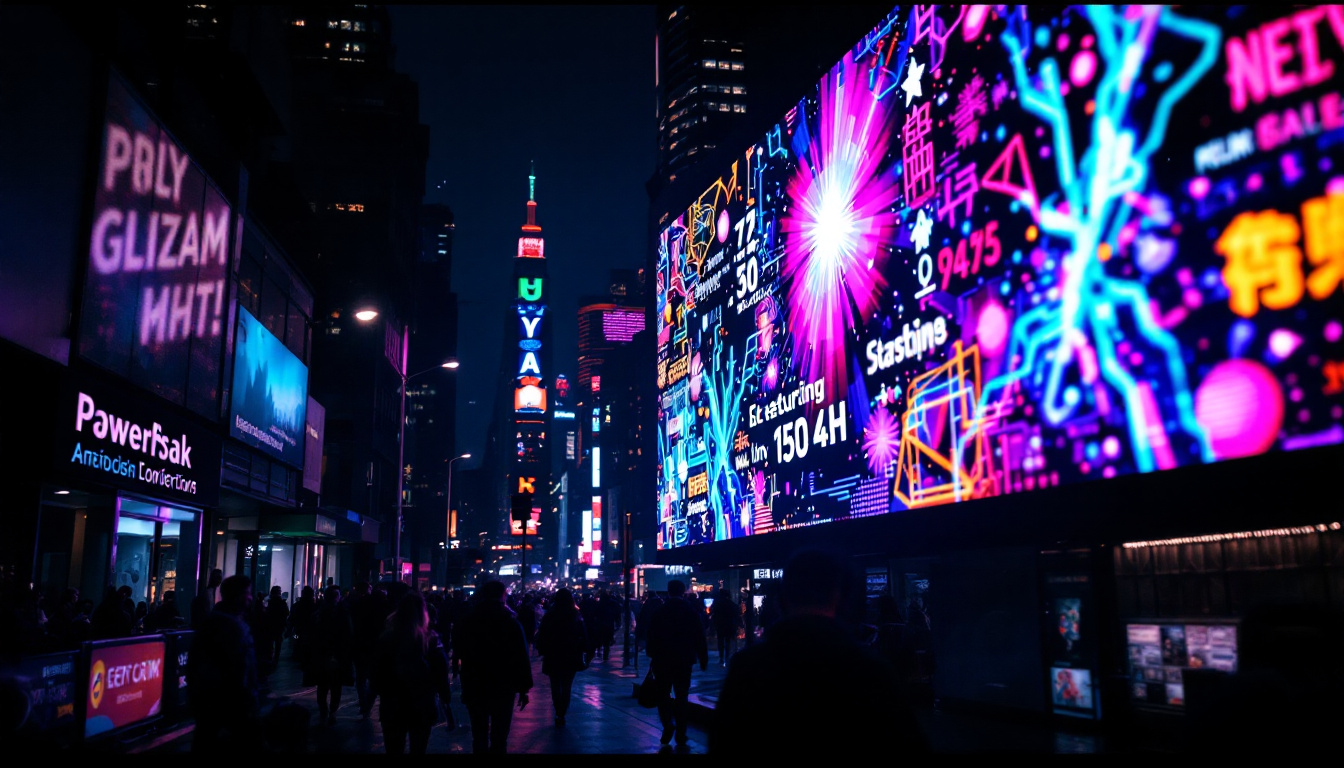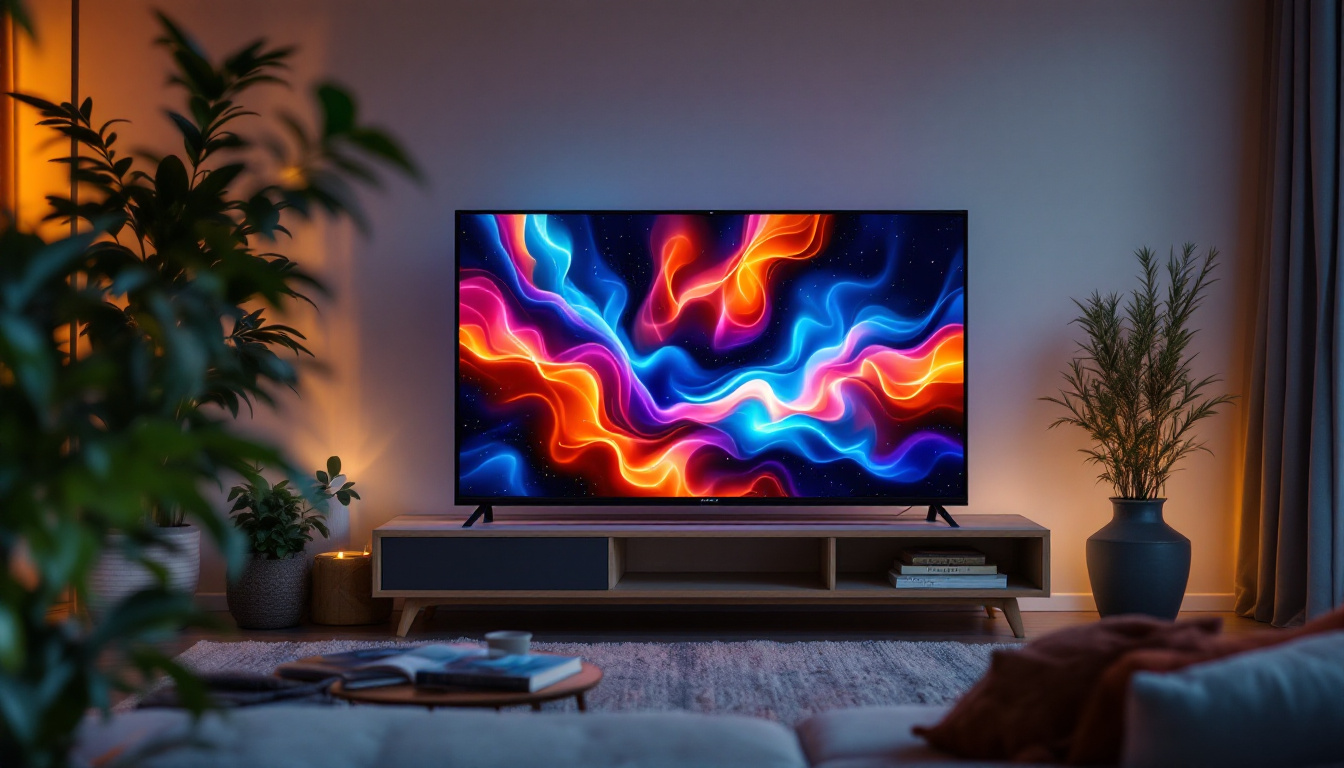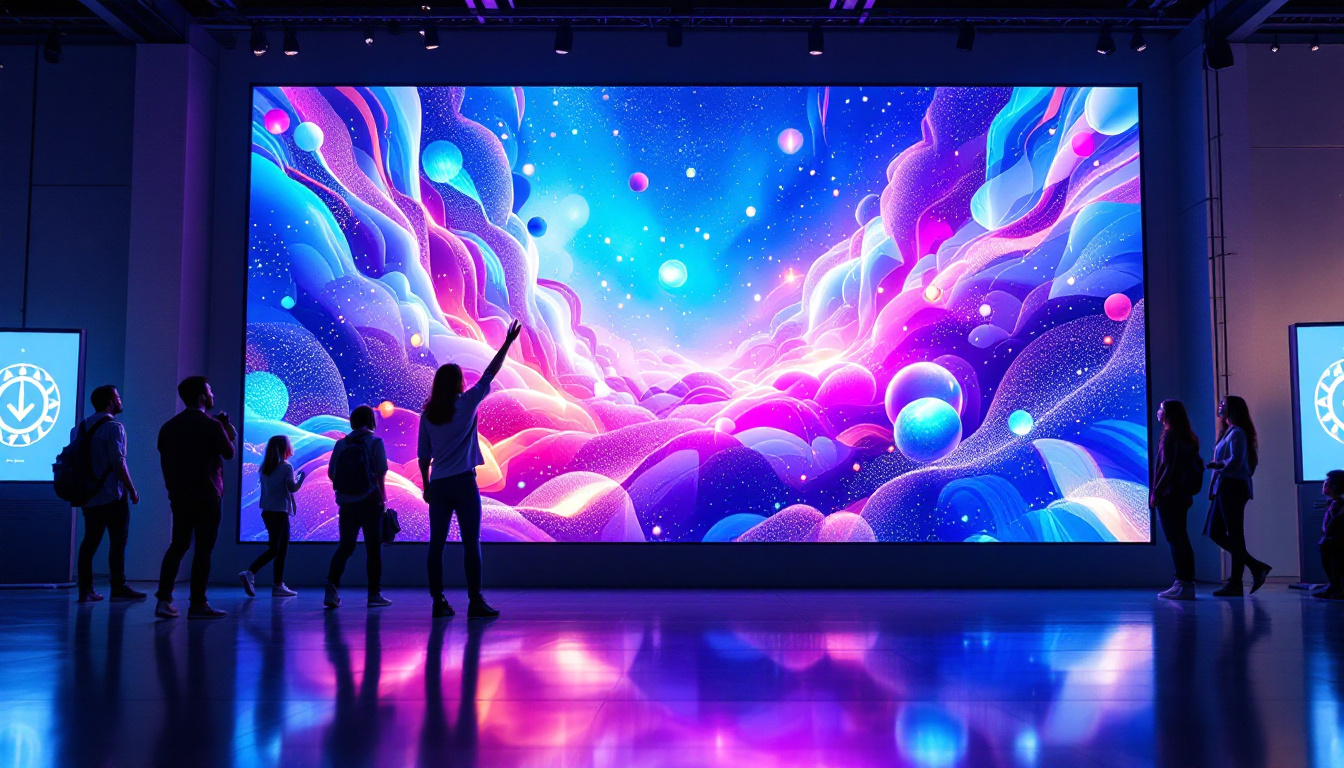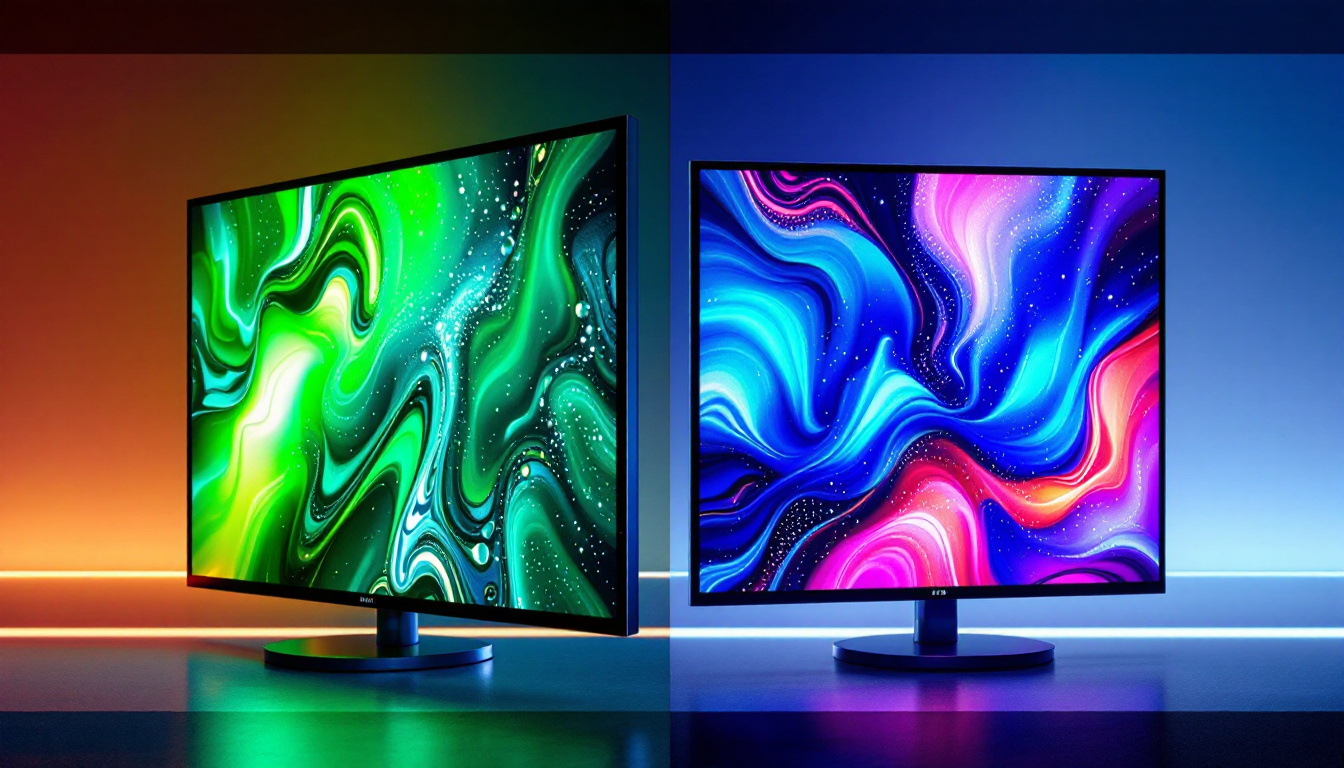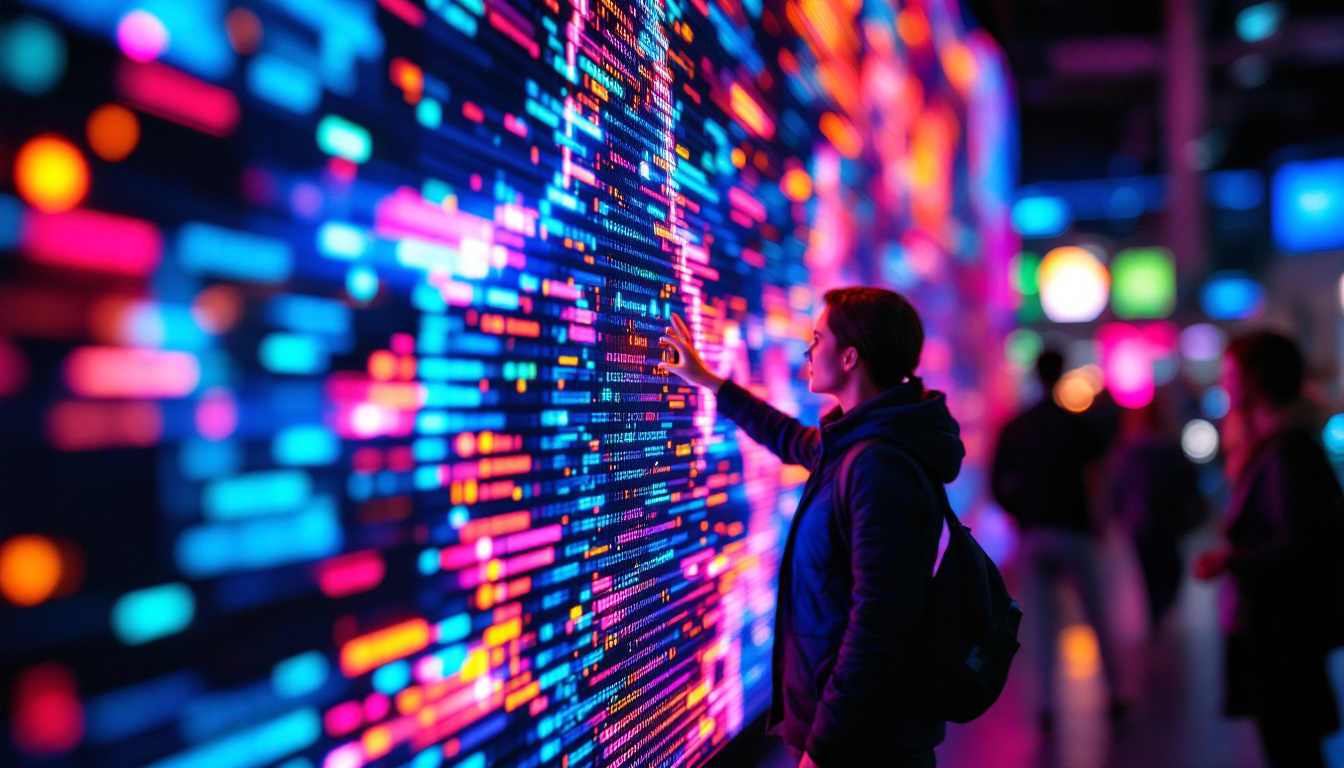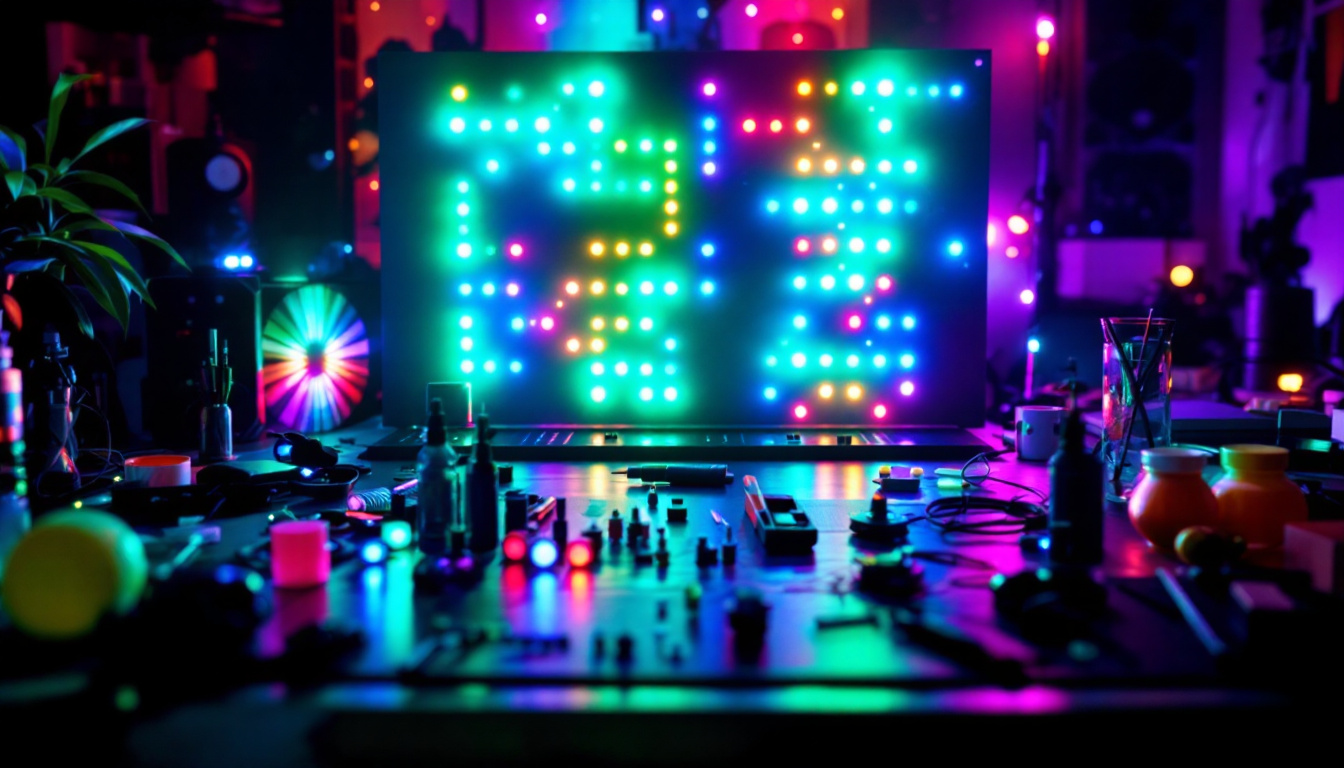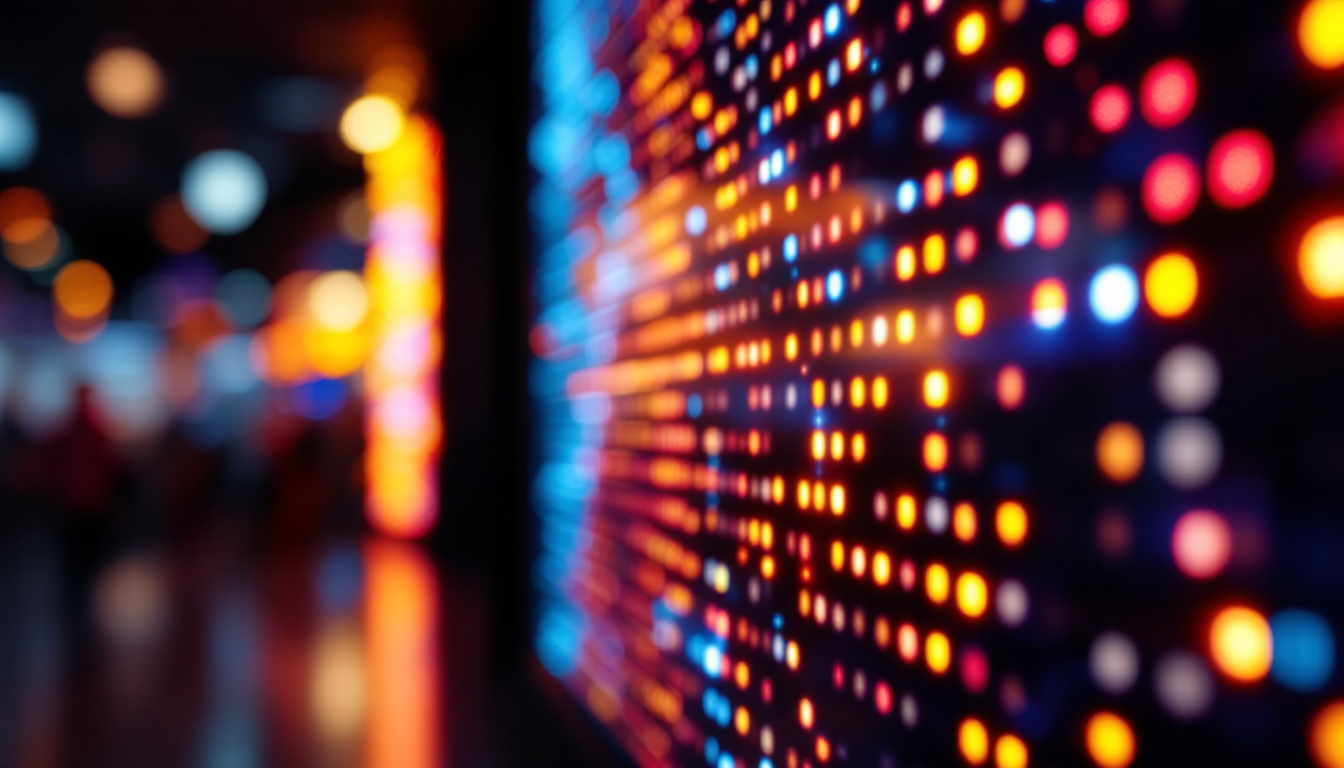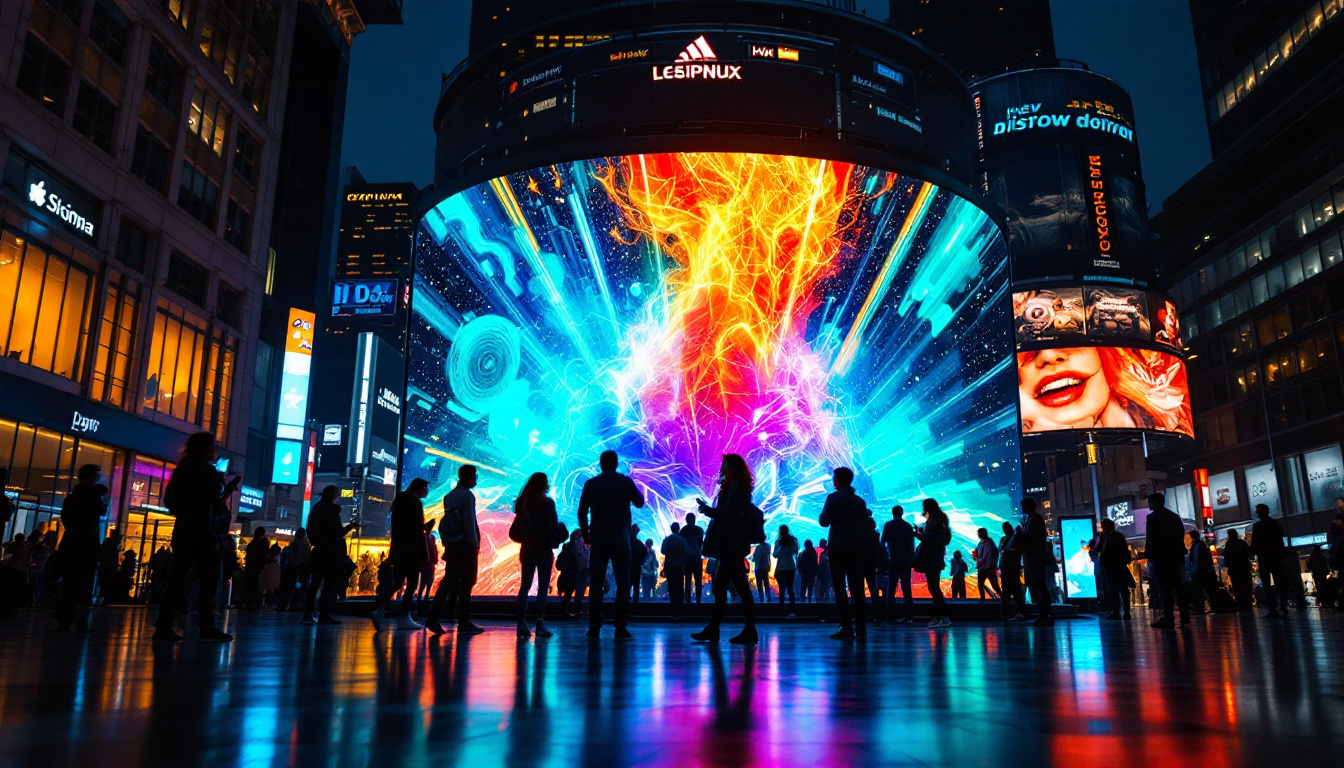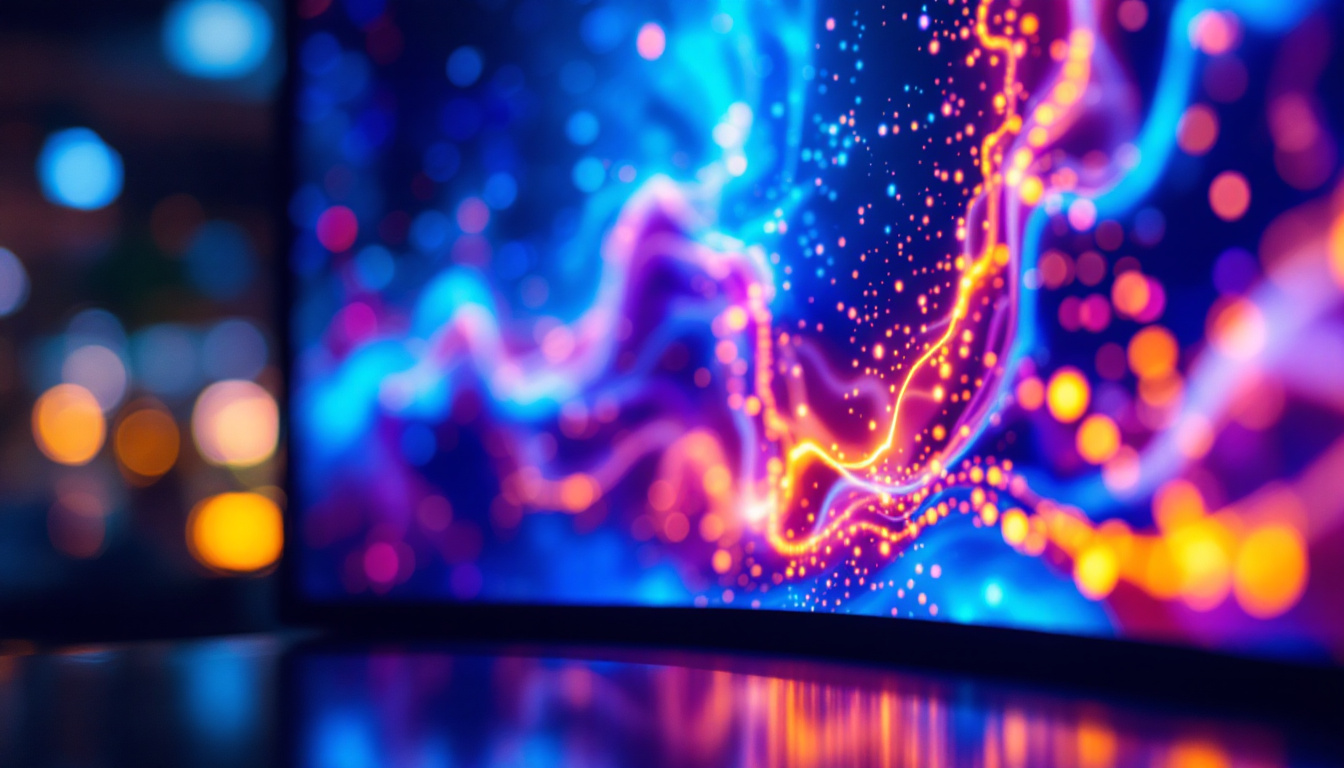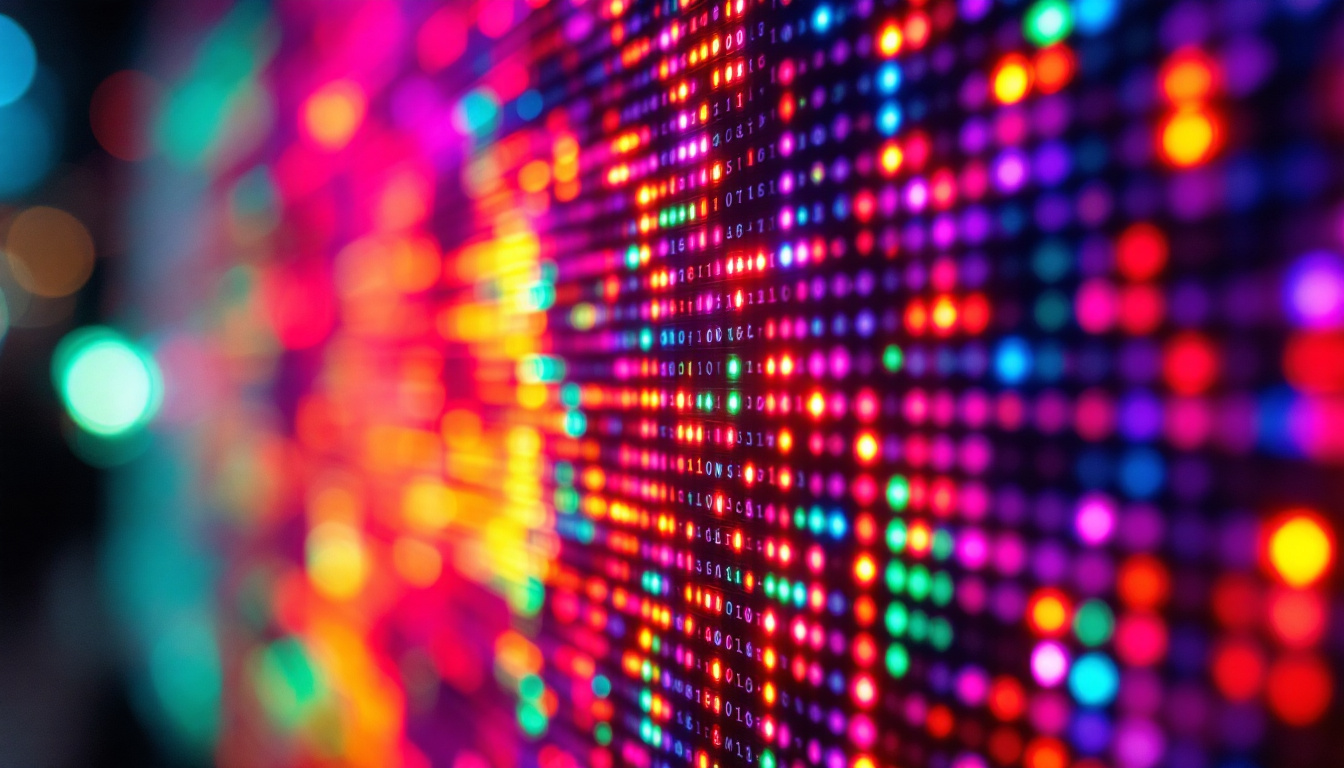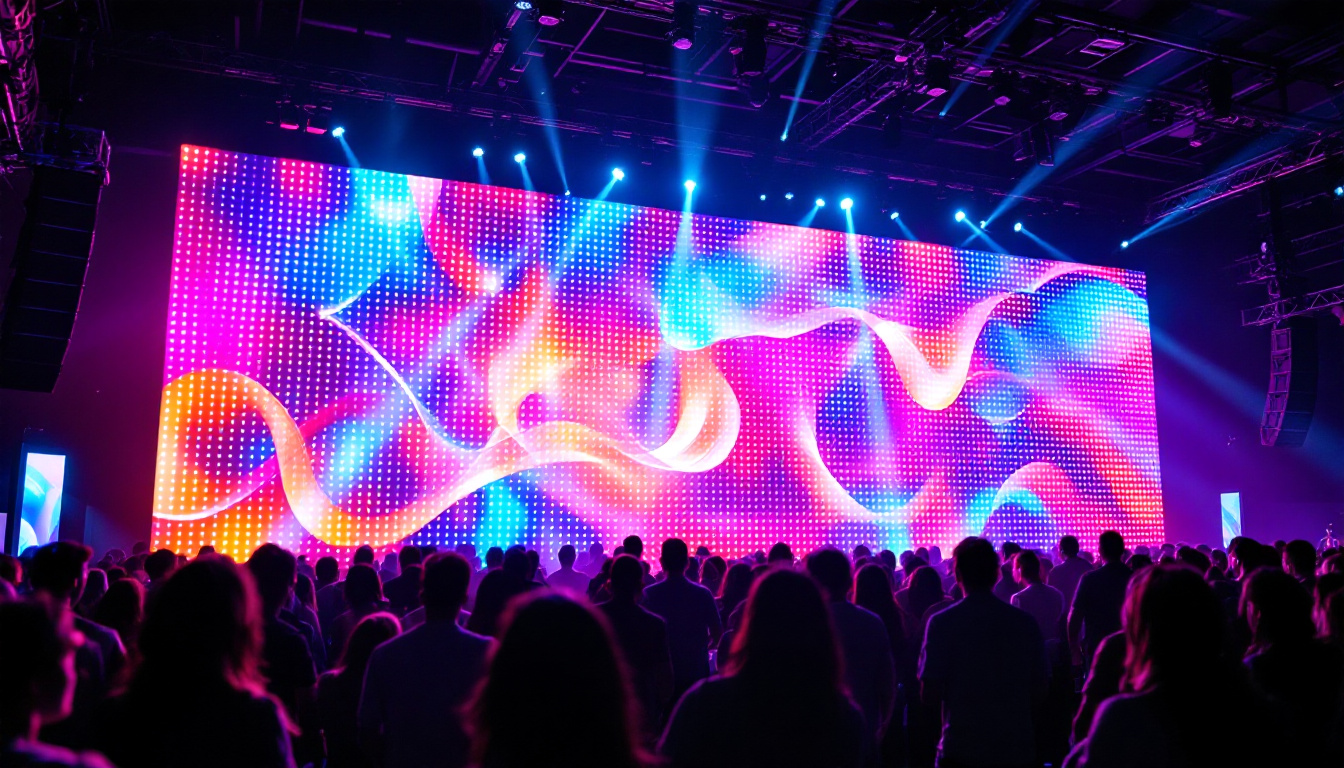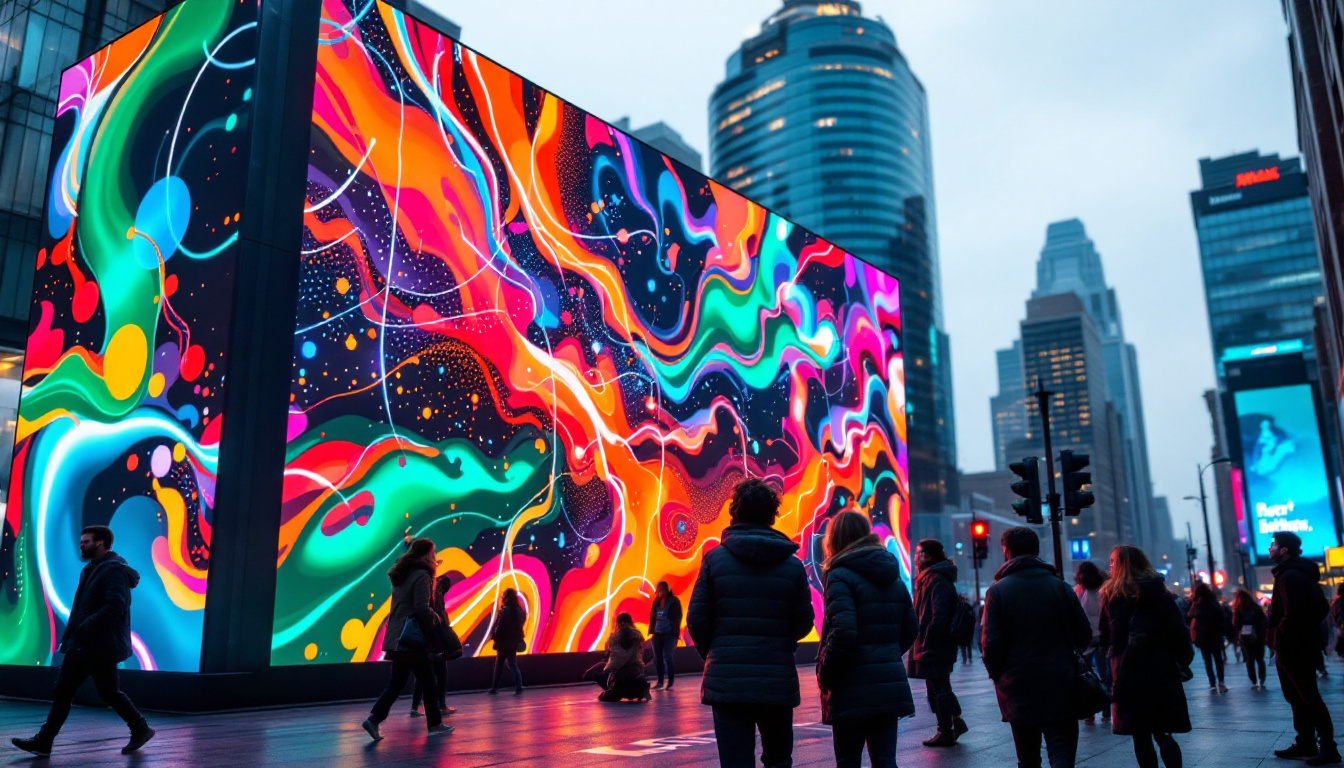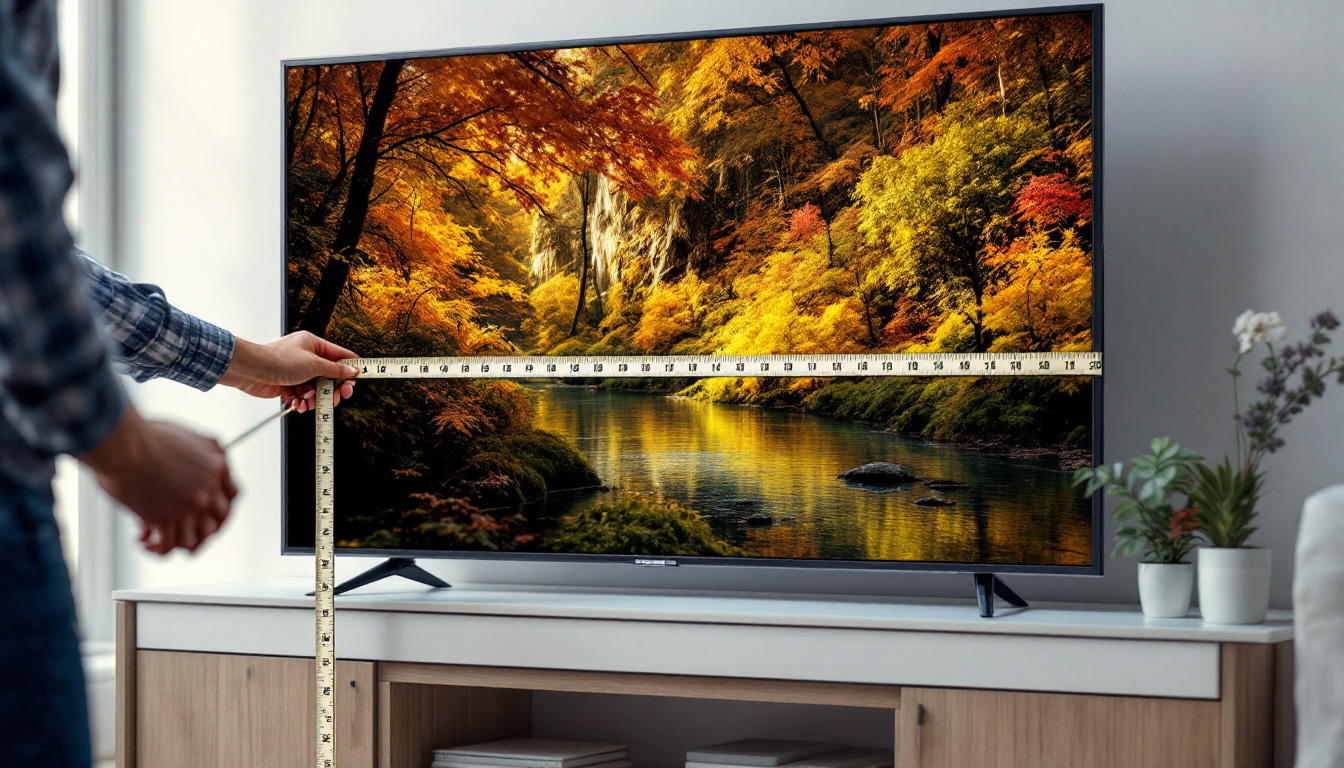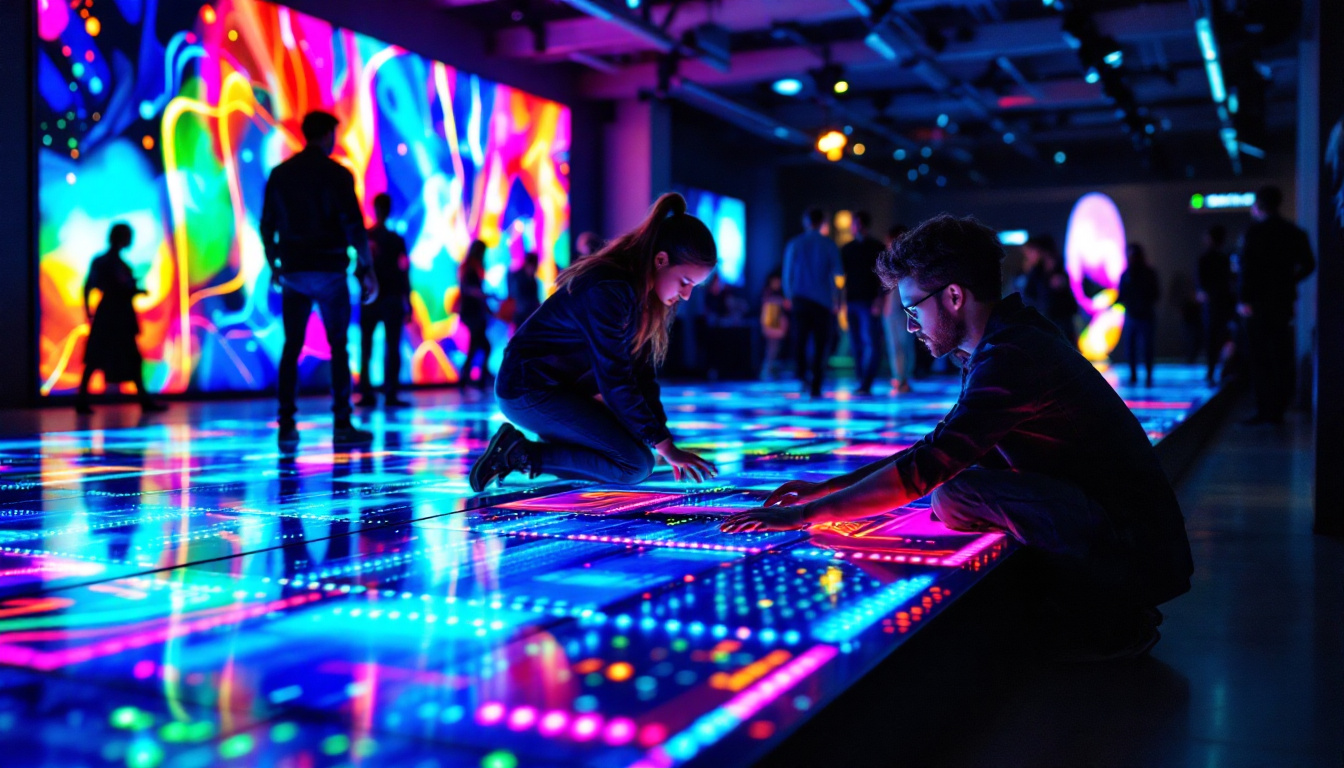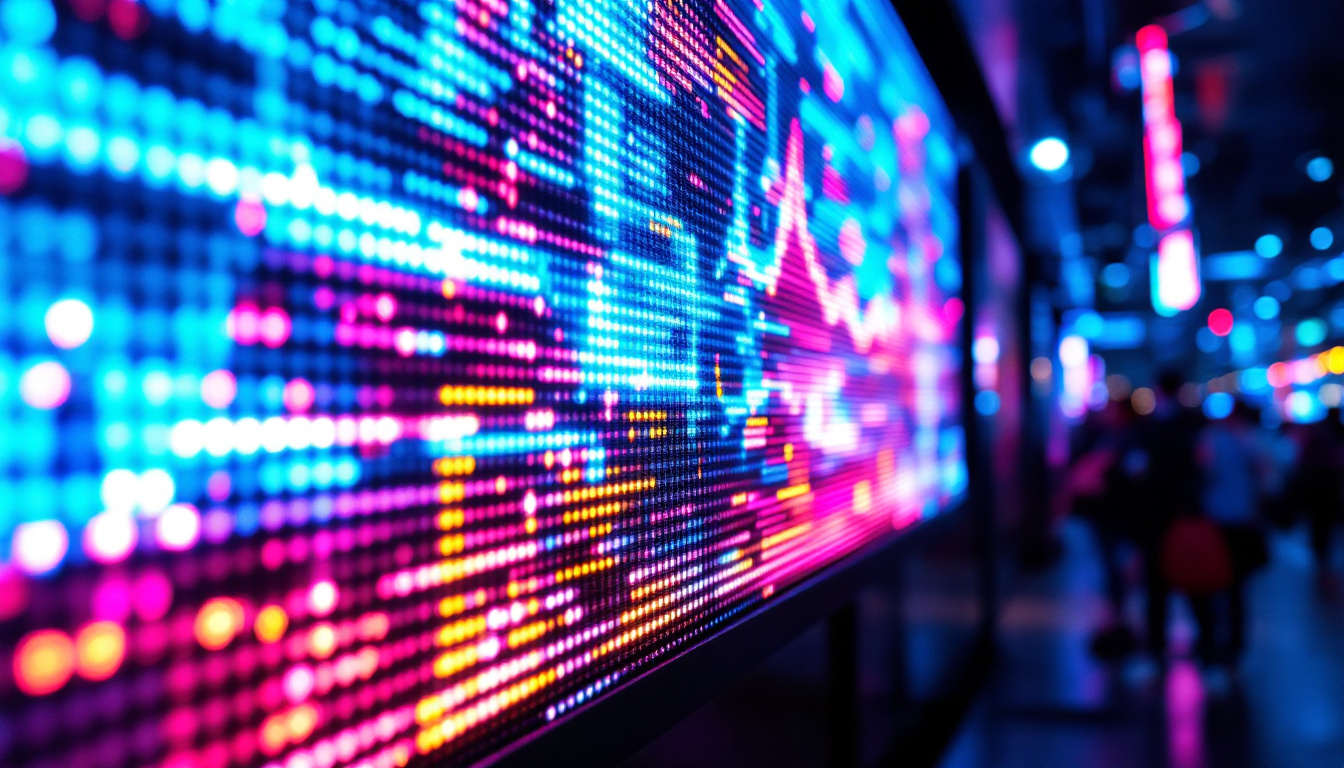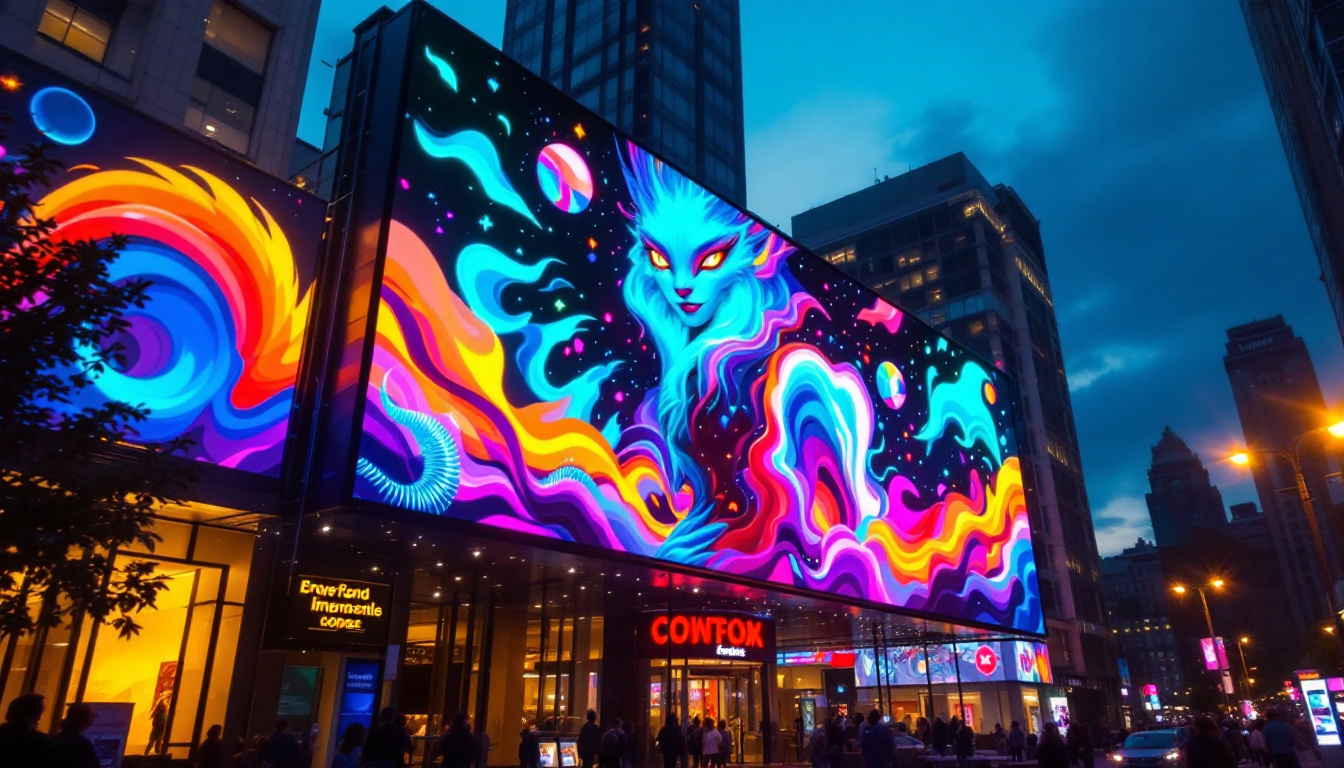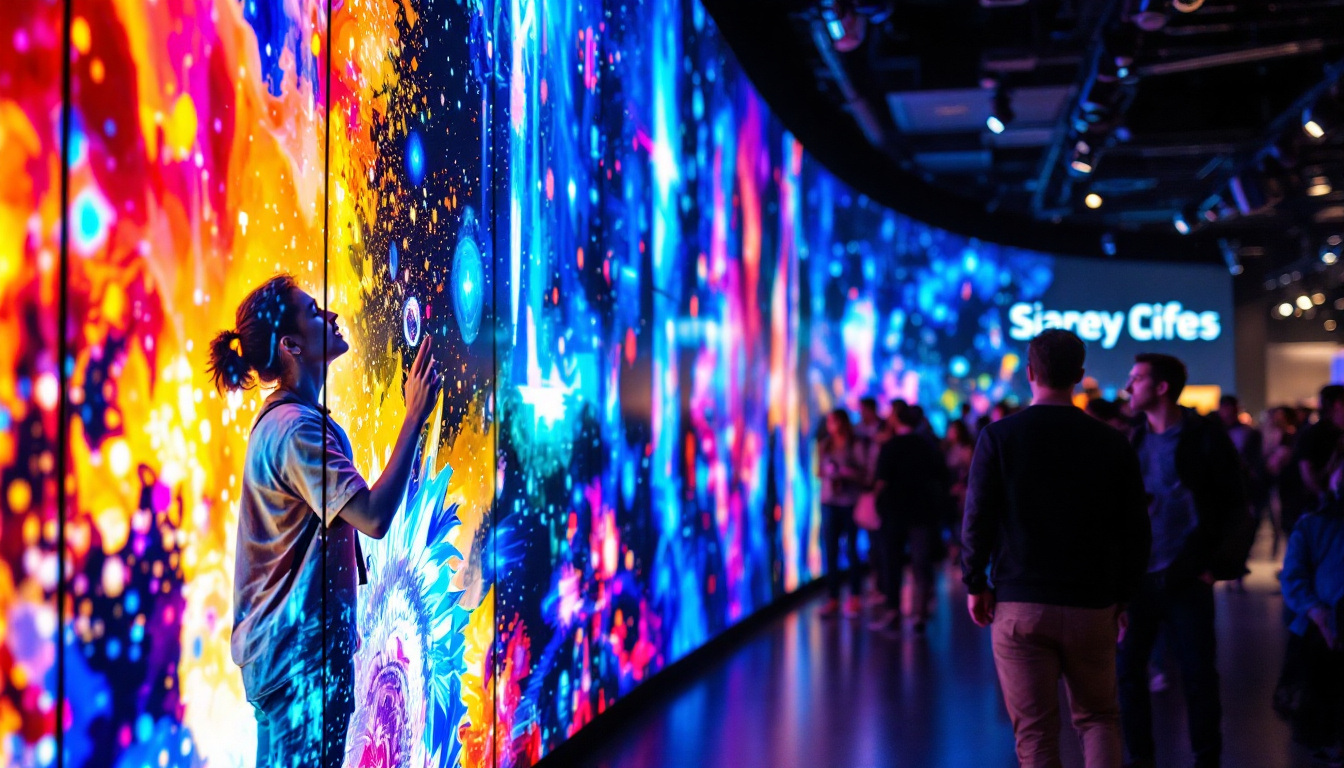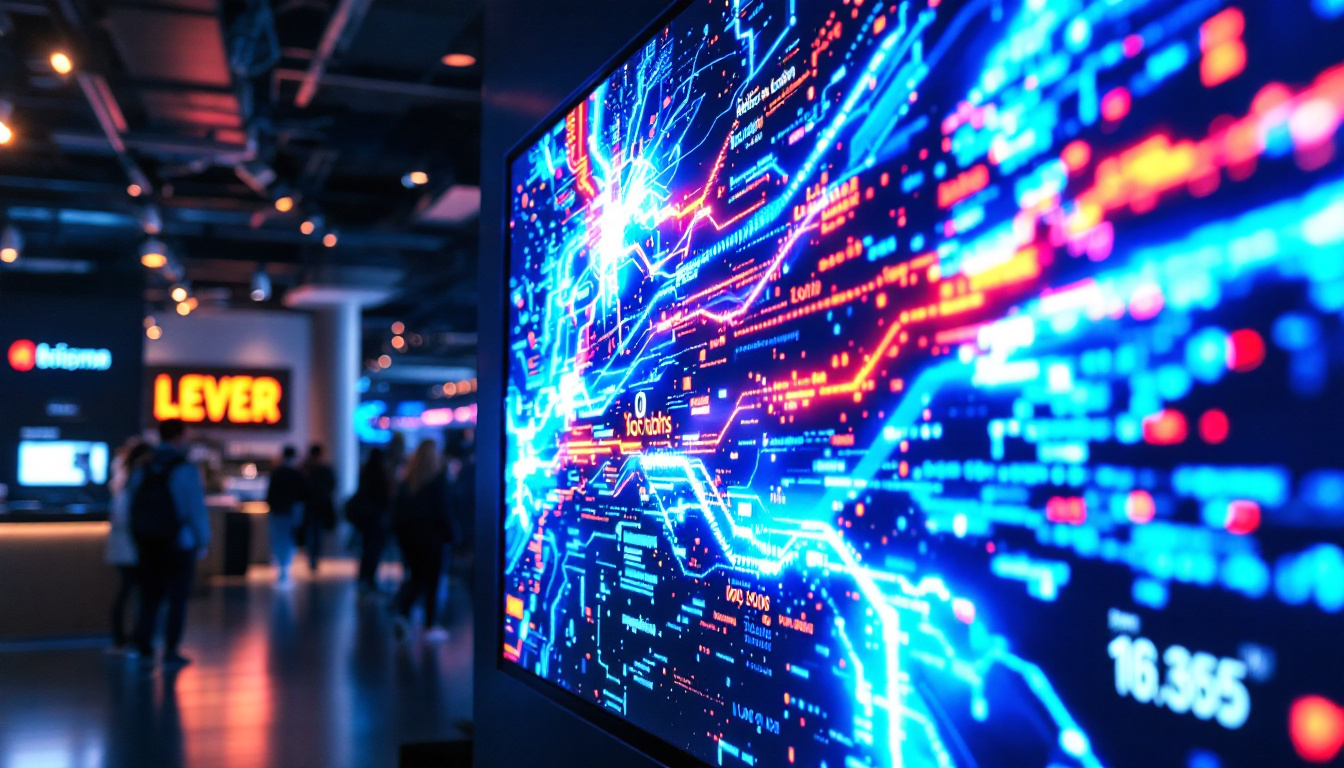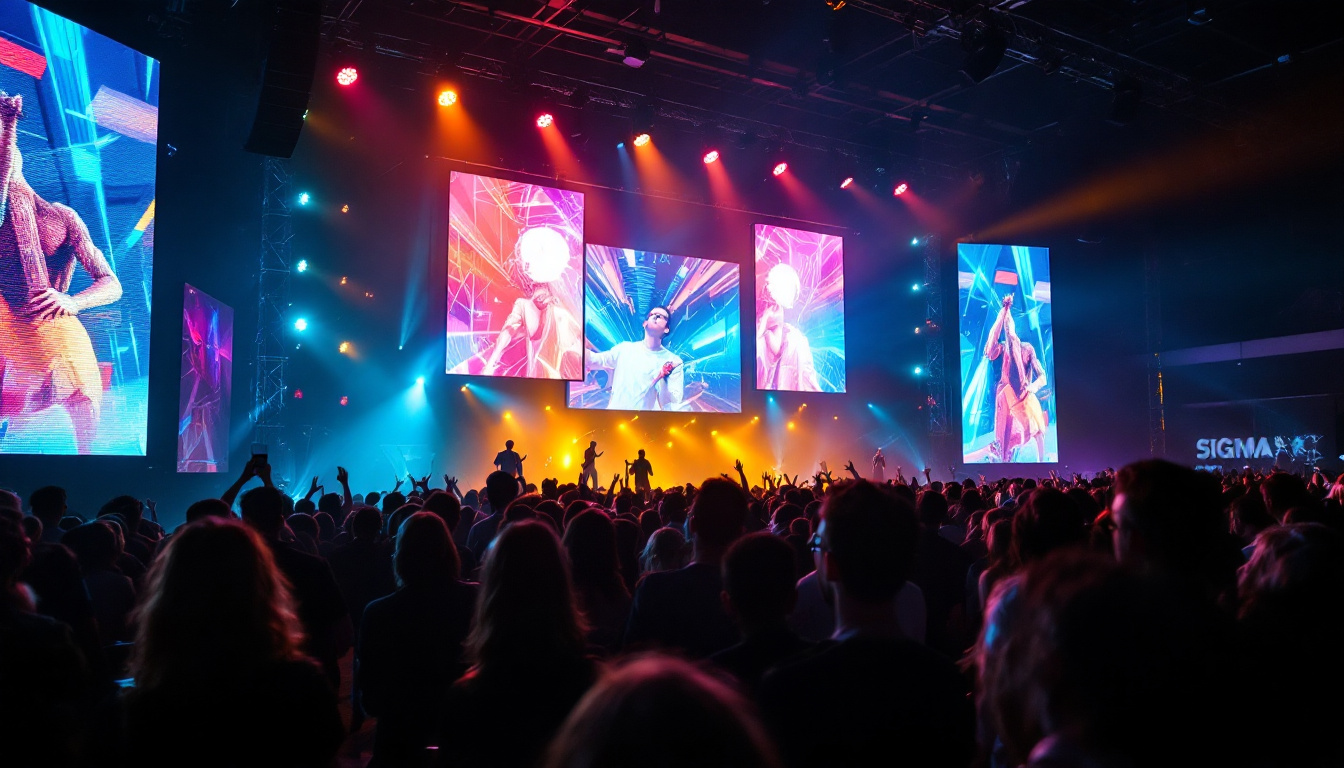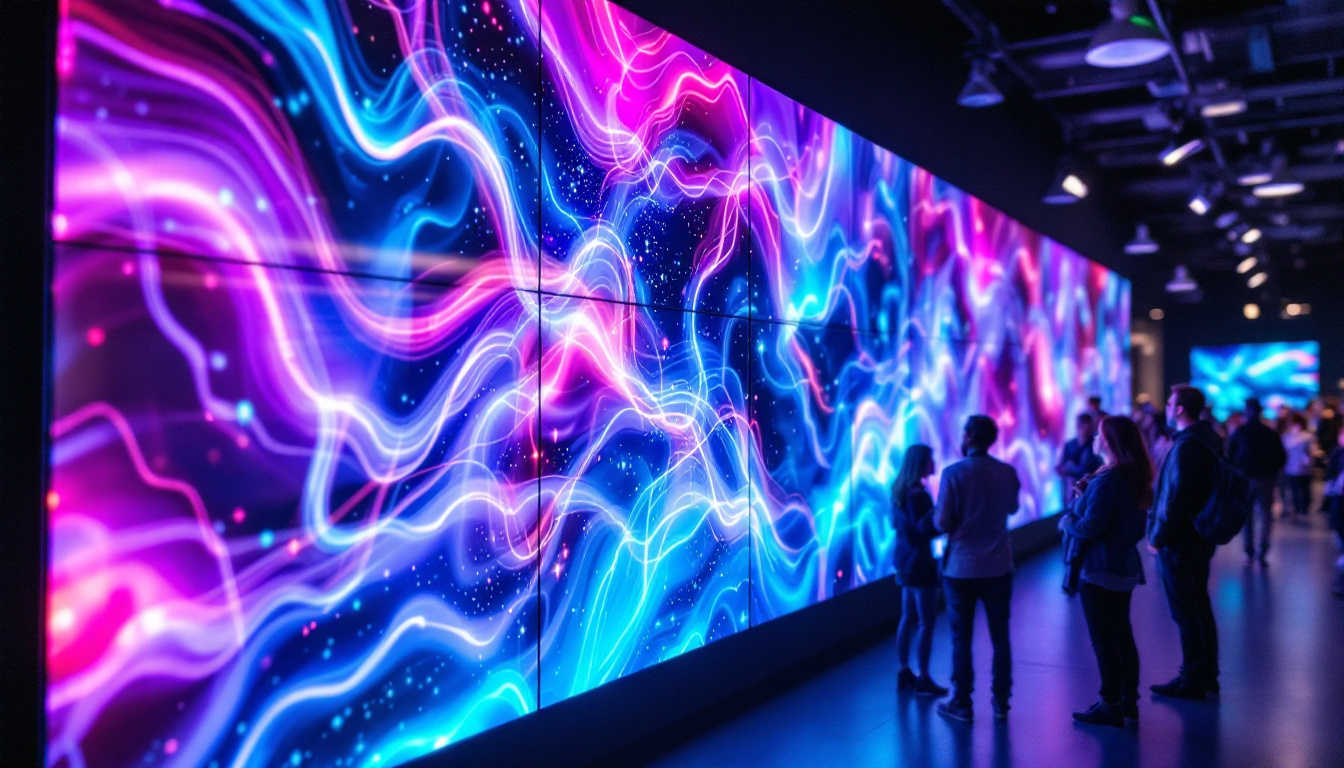In today’s fast-paced digital world, visual communication has become an essential component of marketing, advertising, and information dissemination. One of the most captivating mediums for achieving this is the LED display wall. This technology has revolutionized how businesses and organizations convey messages, engage audiences, and create immersive experiences. This article delves into the intricacies of LED display walls, exploring their components, applications, advantages, and future trends.
Understanding LED Display Technology
LED, or Light Emitting Diode, technology has been around for decades, but its application in display walls has gained significant traction in recent years. LED displays consist of numerous tiny diodes that emit light, allowing for bright and vibrant images. Unlike traditional display technologies, LED displays can be modular, meaning they can be assembled in various configurations to create large screens.
Components of an LED Display Wall
An LED display wall is composed of several key components that work together to deliver high-quality visuals. The primary elements include:
- LED Modules: These are the building blocks of an LED wall. Each module contains multiple LEDs arranged in a grid pattern, allowing for the display of images and videos.
- Control System: This system manages the content displayed on the wall. It includes software that allows users to upload and schedule content, ensuring that the display operates seamlessly.
- Power Supply: LED displays require a stable power source to function efficiently. The power supply ensures that each LED receives the necessary voltage and current.
- Frame or Cabinet: The structure that holds the LED modules in place. It is designed to be robust and can be customized to fit various environments.
How LED Displays Work
LED displays operate on a straightforward principle. When an electric current passes through the diodes, they emit light. By varying the intensity and color of the light emitted from each diode, the display can create a full spectrum of colors. This capability allows for the reproduction of high-resolution images and videos, making LED displays ideal for dynamic content.
Furthermore, the pixel pitch—defined as the distance between the centers of two adjacent pixels—plays a crucial role in determining the display’s resolution. A smaller pixel pitch results in higher resolution and clearer images, making it suitable for close viewing distances.
In addition to pixel pitch, the brightness and contrast ratio of an LED display are vital factors that contribute to its overall performance. Brightness is measured in nits, and a higher brightness level ensures visibility even in well-lit environments, making LED displays ideal for outdoor advertising and large venues. The contrast ratio, which compares the luminance of the brightest white to the darkest black, affects how vivid and lifelike the displayed images appear. Together, these characteristics enhance the viewer’s experience, making LED technology a preferred choice for many applications, from concerts to corporate events.
Moreover, advancements in LED technology have led to the development of features such as HDR (High Dynamic Range) and wide color gamut capabilities. HDR allows for a greater range of colors and contrasts, resulting in images that are more realistic and immersive. This is particularly beneficial in environments where visual impact is crucial, such as in art installations or high-profile product launches. As the technology continues to evolve, we can expect even more innovative features that will further enhance the functionality and aesthetic appeal of LED display walls.
Applications of LED Display Walls
The versatility of LED display walls makes them suitable for a wide range of applications across various industries. From advertising to entertainment, their ability to capture attention and convey messages effectively is unparalleled.
Advertising and Marketing
One of the most prominent uses of LED display walls is in advertising. Businesses leverage these displays to showcase promotions, new products, and brand messages in high-traffic areas. The bright, vibrant visuals attract potential customers and can significantly enhance brand visibility.
Moreover, LED displays can be programmed to change content in real-time, allowing for dynamic advertising strategies that can respond to market trends or consumer behavior. This flexibility provides marketers with a powerful tool to engage their target audience effectively.
Entertainment and Events
In the entertainment industry, LED display walls have become a staple at concerts, festivals, and sporting events. They are used to create stunning visual backdrops, display live feeds, and enhance the overall experience for attendees. The immersive quality of LED displays captivates audiences, making events more memorable.
Additionally, LED walls are often employed in theaters and cinemas to provide high-quality visuals that enhance storytelling. The ability to create vibrant and dynamic scenes contributes to the audience’s emotional engagement with the performance.
Corporate and Educational Settings
LED display walls are increasingly being adopted in corporate environments for presentations, meetings, and training sessions. Their ability to present information clearly and engagingly helps facilitate communication and collaboration among team members.
In educational settings, LED displays serve as powerful teaching tools. They can display educational content, facilitate interactive learning experiences, and even broadcast live events, enhancing the learning environment for students.
Advantages of LED Display Walls
The growing popularity of LED display walls can be attributed to several advantages they offer over traditional display technologies. Understanding these benefits helps organizations make informed decisions when considering their visual communication needs.
High Brightness and Visibility
One of the most significant advantages of LED displays is their brightness. LED walls can produce vivid colors and high contrast ratios, ensuring that content remains visible even in bright environments. This characteristic makes them ideal for outdoor advertising and events where ambient light can be a challenge.
Energy Efficiency
LED technology is known for its energy efficiency. Compared to traditional display technologies, LED displays consume significantly less power while delivering superior brightness and quality. This efficiency not only reduces operational costs but also contributes to a smaller carbon footprint, making LED displays a more sustainable choice.
Durability and Longevity
LED displays are built to last. They are resistant to shock, vibration, and harsh weather conditions, making them suitable for both indoor and outdoor applications. Additionally, LED technology has a longer lifespan compared to other display technologies, reducing the need for frequent replacements and maintenance.
Challenges and Considerations
While LED display walls offer numerous advantages, there are also challenges and considerations that organizations should keep in mind when implementing this technology.
Initial Investment Costs
One of the primary challenges associated with LED display walls is the initial investment cost. High-quality LED displays can be expensive, and organizations must carefully evaluate their budget and return on investment. However, it is essential to consider the long-term benefits and savings that come with energy efficiency and durability.
Technical Expertise
Operating and maintaining an LED display wall requires a certain level of technical expertise. Organizations may need to invest in training for staff or hire specialized personnel to manage the system effectively. This requirement can add to the overall cost and complexity of implementation.
Content Management
Creating engaging content for LED displays is crucial for maximizing their impact. Organizations must develop a content strategy that aligns with their goals and resonates with their target audience. This process may require collaboration with designers and marketing professionals to ensure that the content is visually appealing and effective.
Future Trends in LED Display Technology
The LED display industry is continually evolving, with new technologies and trends emerging that promise to enhance the capabilities and applications of LED display walls. Staying informed about these trends can help organizations leverage the latest advancements for their visual communication needs.
Advancements in Pixel Technology
As demand for higher resolution displays grows, advancements in pixel technology are expected to continue. Innovations such as microLED and miniLED technologies are paving the way for even smaller pixel pitches, resulting in sharper images and improved color accuracy. These advancements will enable LED displays to be used in more diverse applications, including virtual reality and augmented reality environments.
Integration with Smart Technologies
The integration of LED displays with smart technologies is another trend to watch. As the Internet of Things (IoT) continues to expand, LED displays can be connected to various devices and platforms, allowing for real-time data visualization and interactive experiences. This capability can enhance engagement and provide valuable insights for businesses and organizations.
Focus on Sustainability
With growing concerns about environmental impact, the LED display industry is placing a stronger emphasis on sustainability. Manufacturers are exploring eco-friendly materials and production processes, as well as recycling programs for old displays. Organizations can benefit from these initiatives by choosing sustainable options that align with their corporate social responsibility goals.
Conclusion
LED display walls have transformed the landscape of visual communication, offering businesses and organizations a powerful tool to engage audiences and convey messages effectively. With their vibrant visuals, energy efficiency, and durability, LED displays are well-suited for a wide range of applications across various industries.
While challenges such as initial investment costs and the need for technical expertise exist, the long-term benefits of LED display walls make them a worthwhile consideration for any organization looking to enhance its visual communication strategy. As technology continues to advance, staying informed about the latest trends will ensure that organizations can leverage LED displays to their fullest potential.
In a world where capturing attention is paramount, LED display walls stand out as a dynamic and impactful solution for conveying messages and creating memorable experiences.
Discover LumenMatrix LED Display Solutions
Ready to elevate your visual communication strategy with cutting-edge LED display technology? Look no further than LumenMatrix, a pioneer in crafting immersive and vibrant visual experiences. Whether you need an Indoor LED Wall Display for your corporate events, an Outdoor LED Wall Display for impactful advertising, or any of our other innovative solutions like Vehicle, Sports, or Floor LED Displays, LumenMatrix has the expertise to bring your vision to life. Embrace the future of digital signage with our Custom, All-in-One, and Transparent LED Displays, designed to captivate your audience and amplify your message. Check out LumenMatrix LED Display Solutions today and transform the way you connect with your audience.

